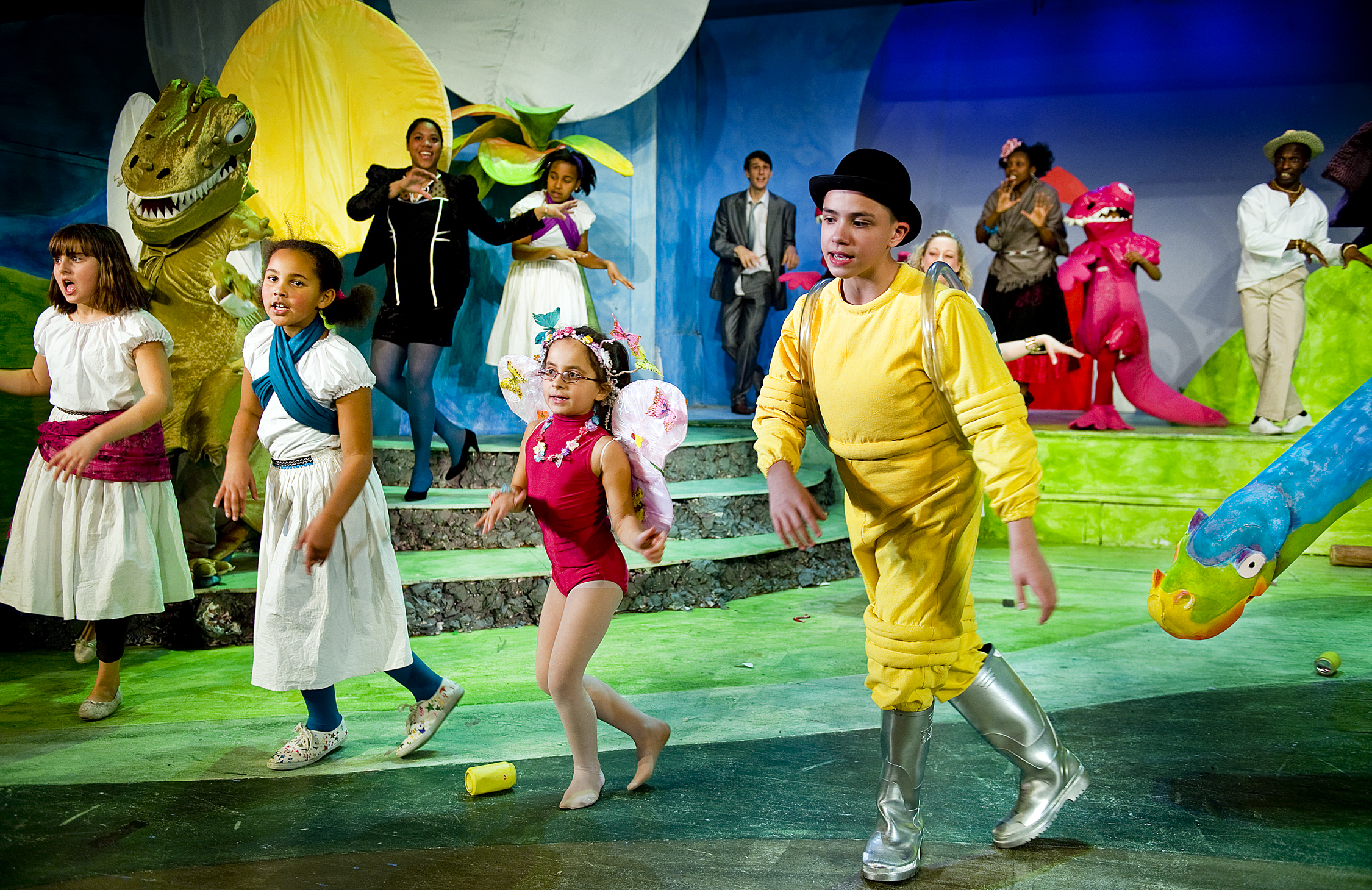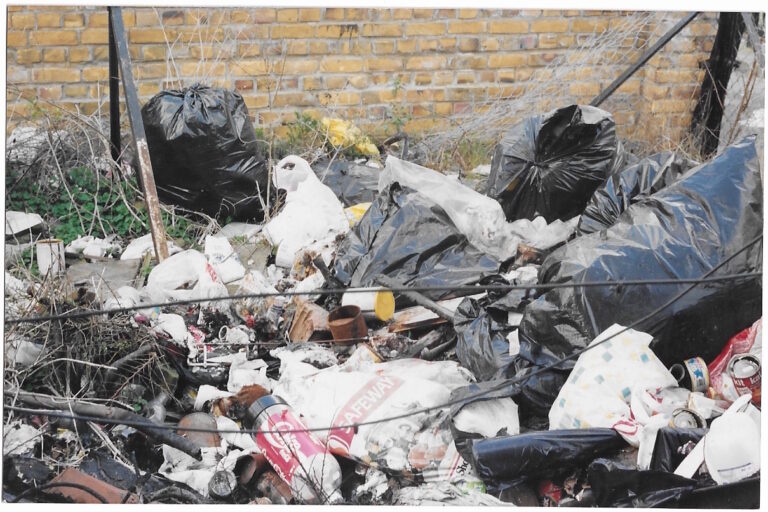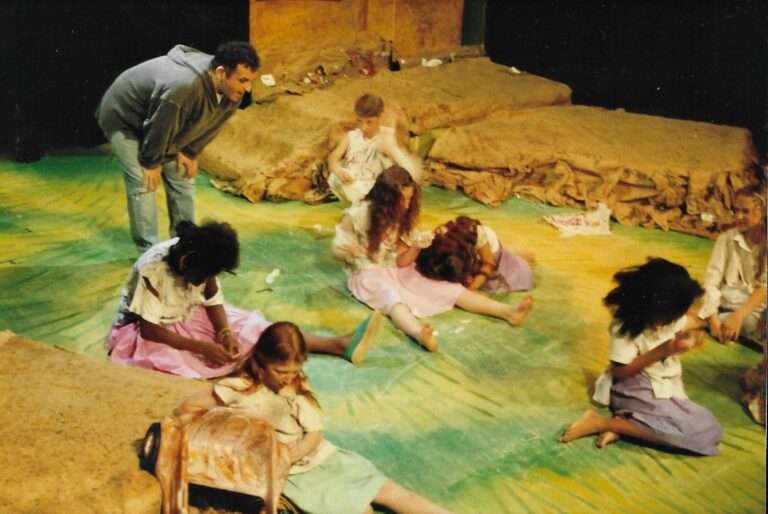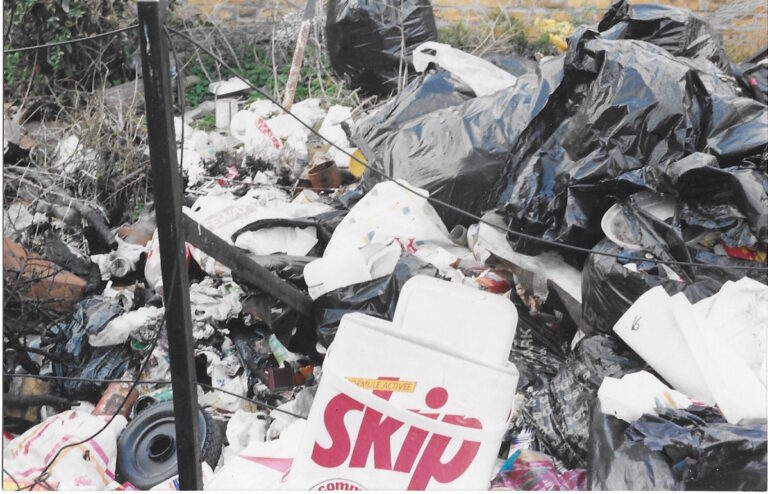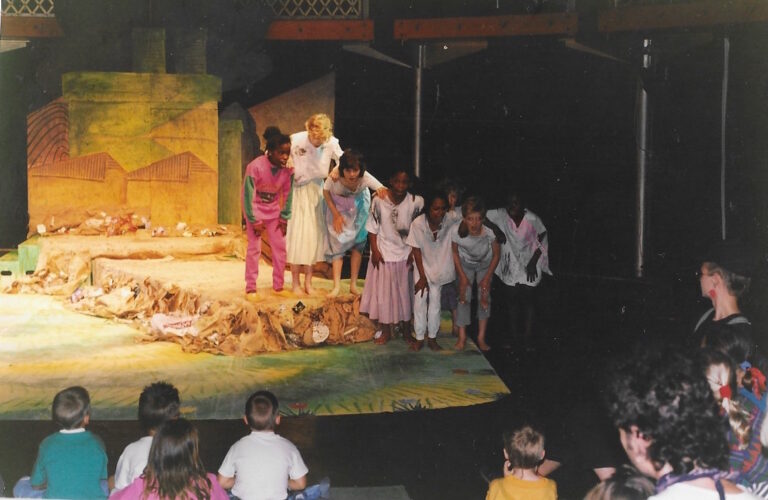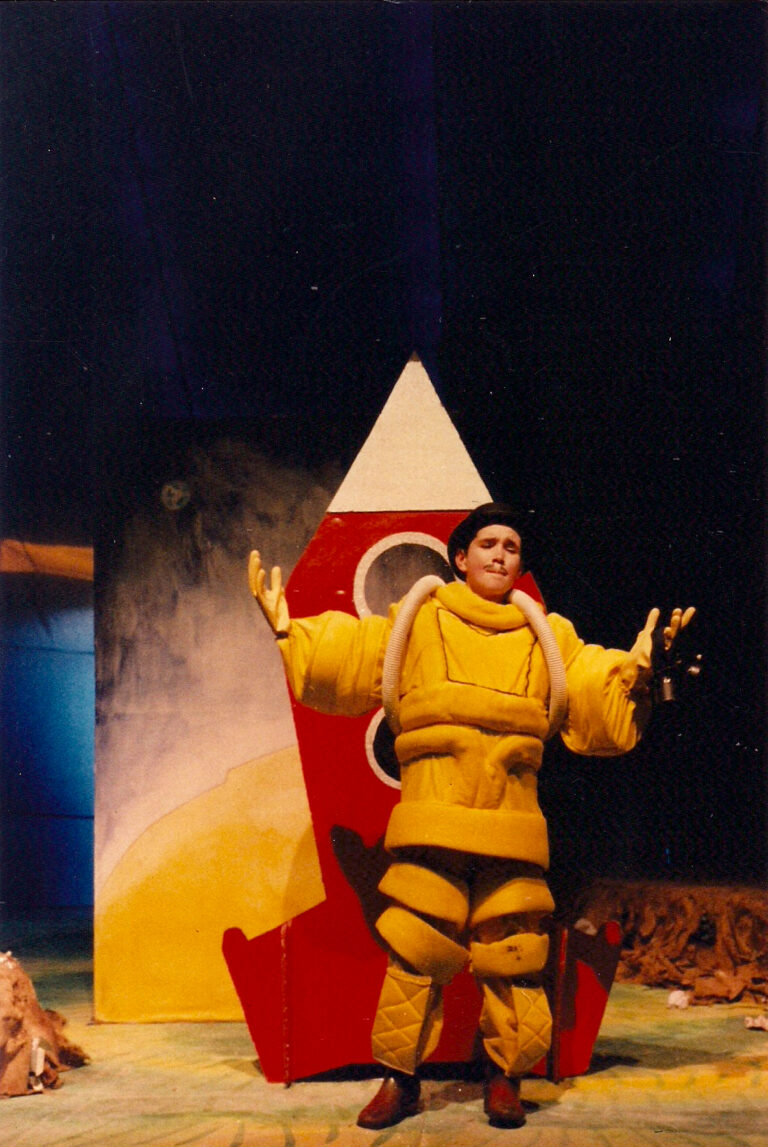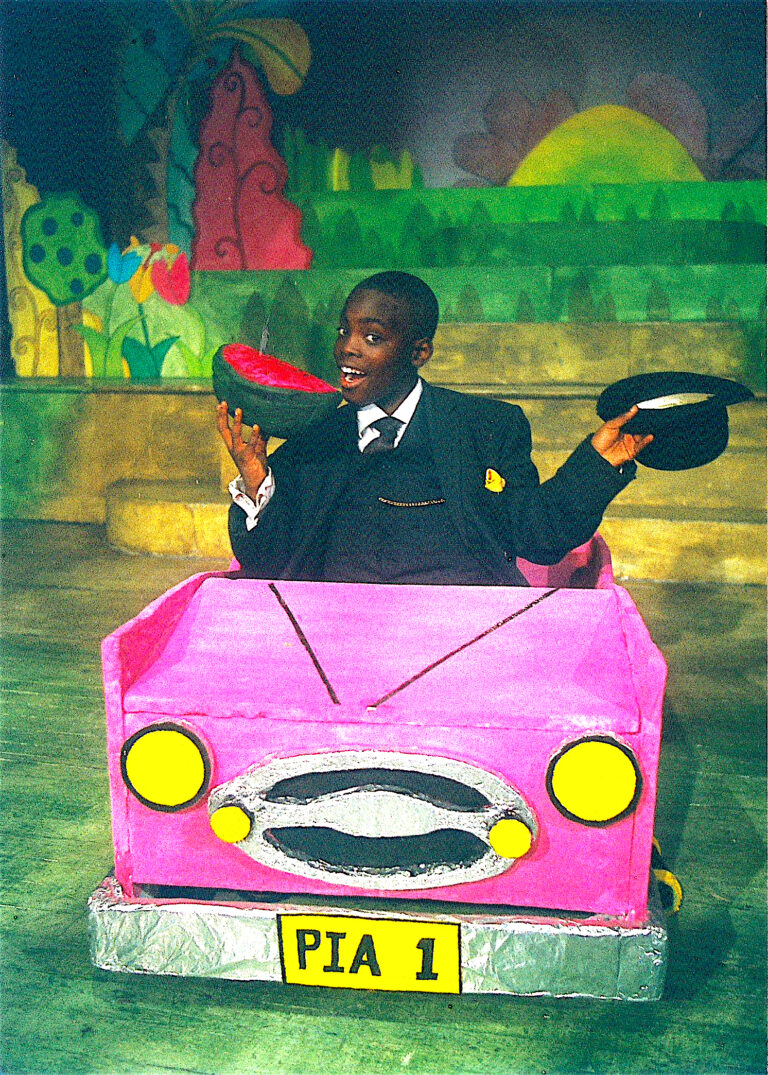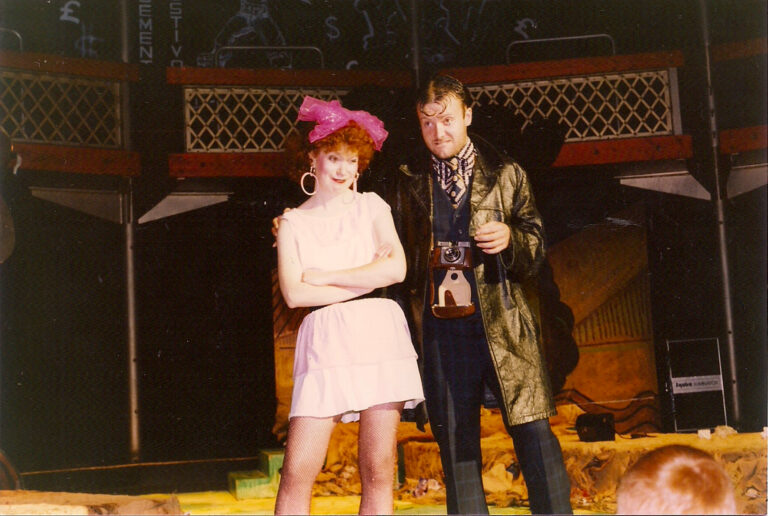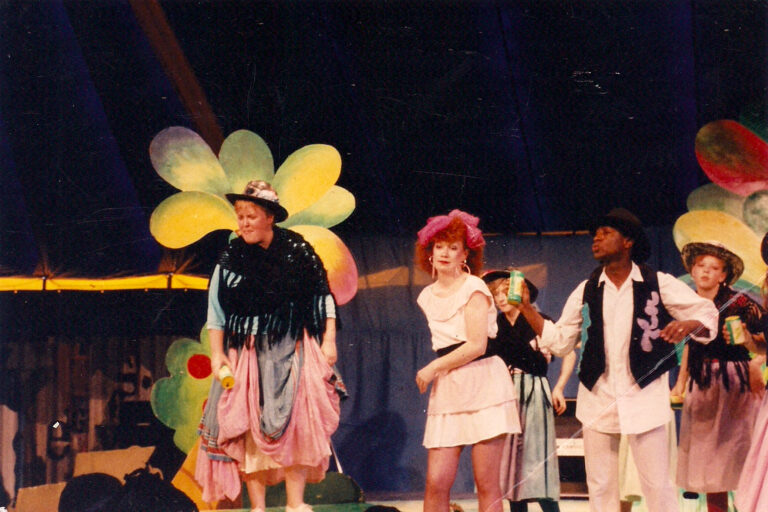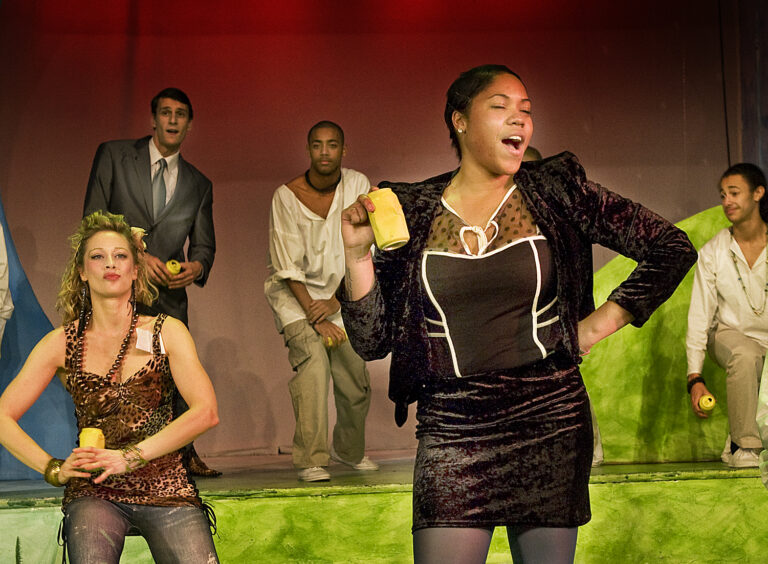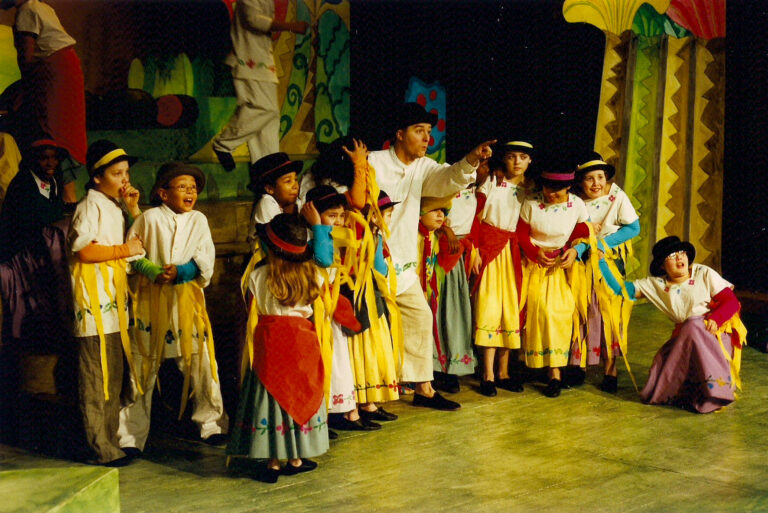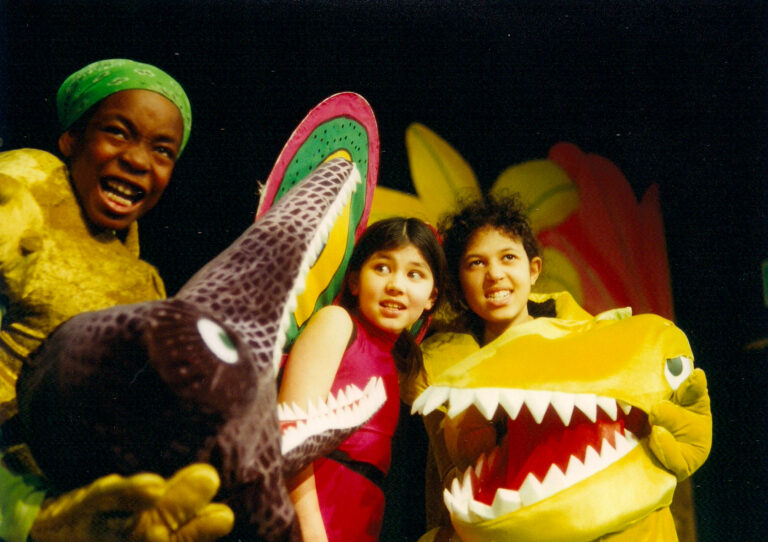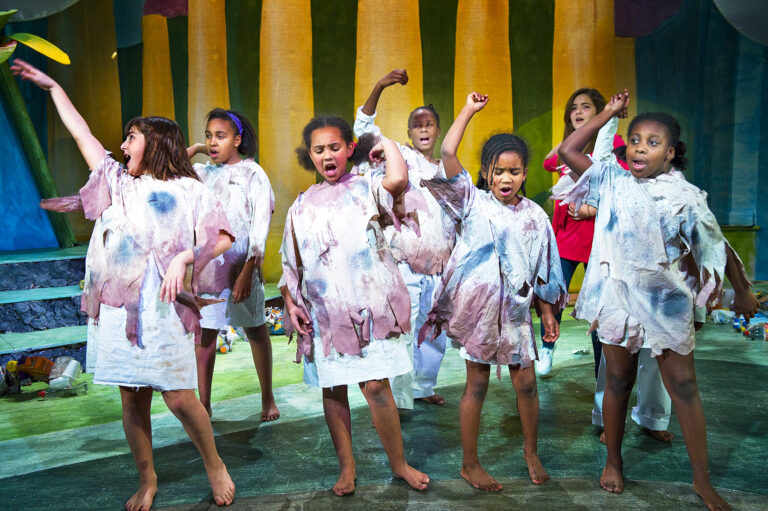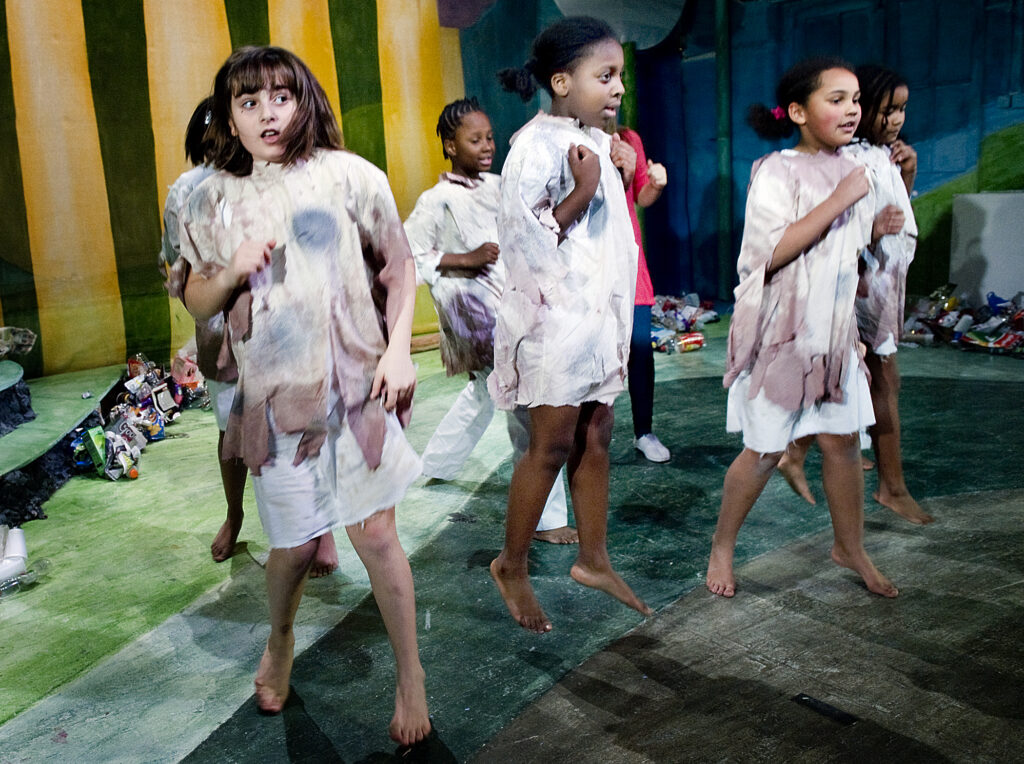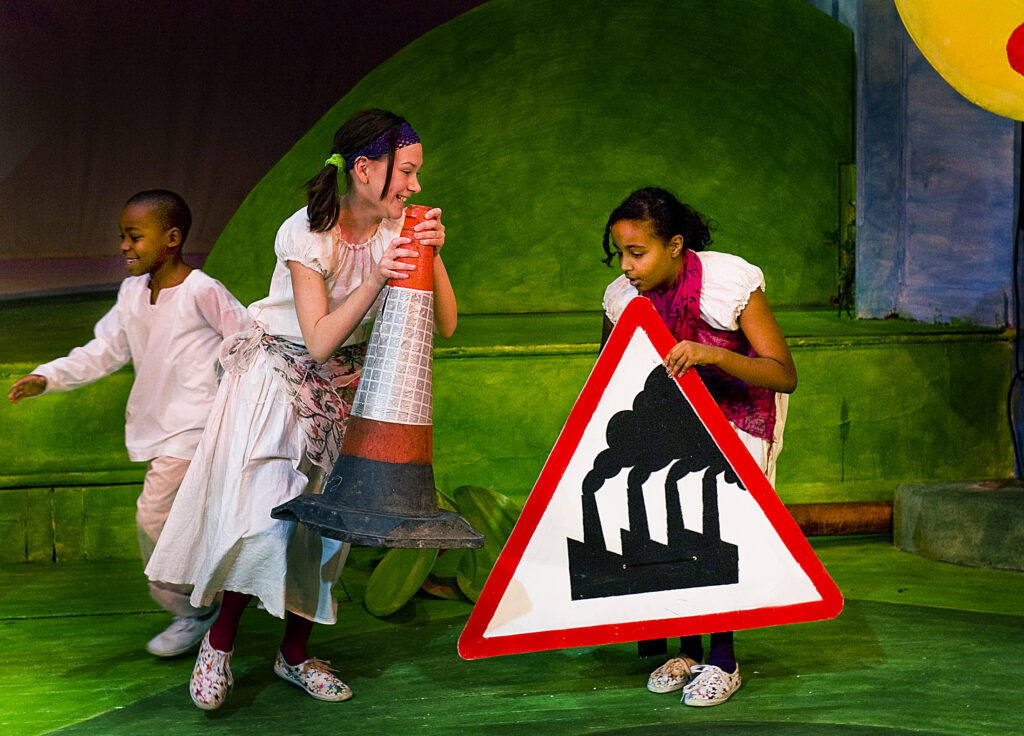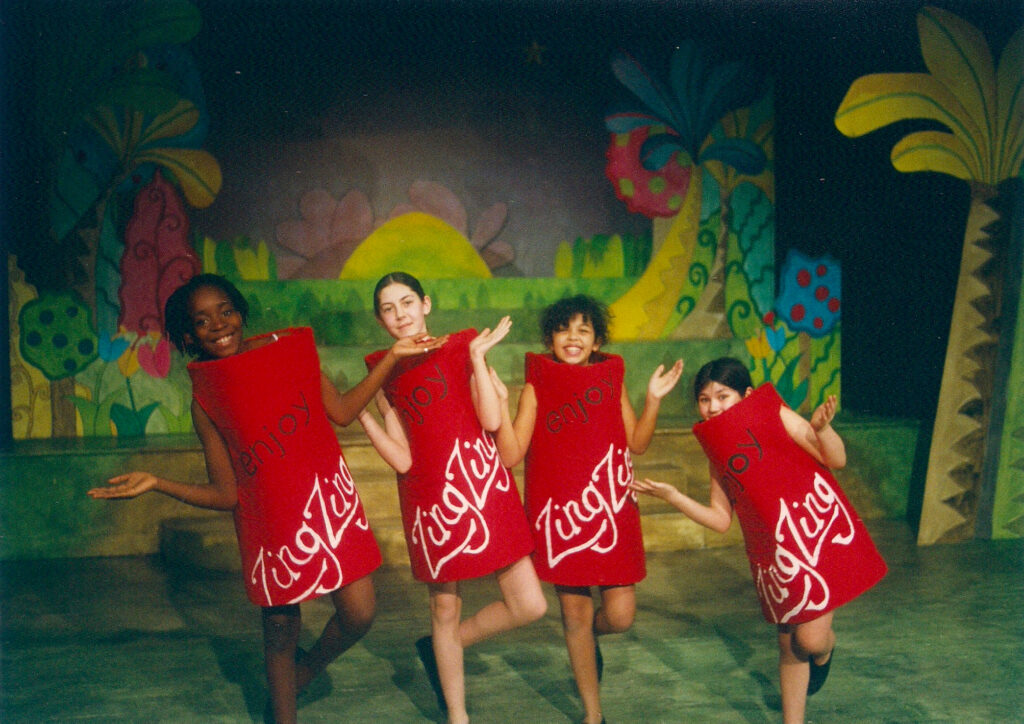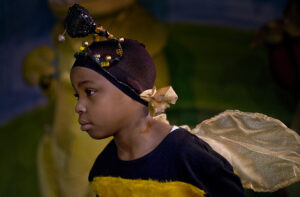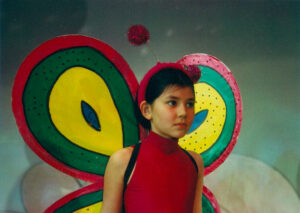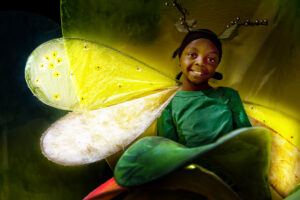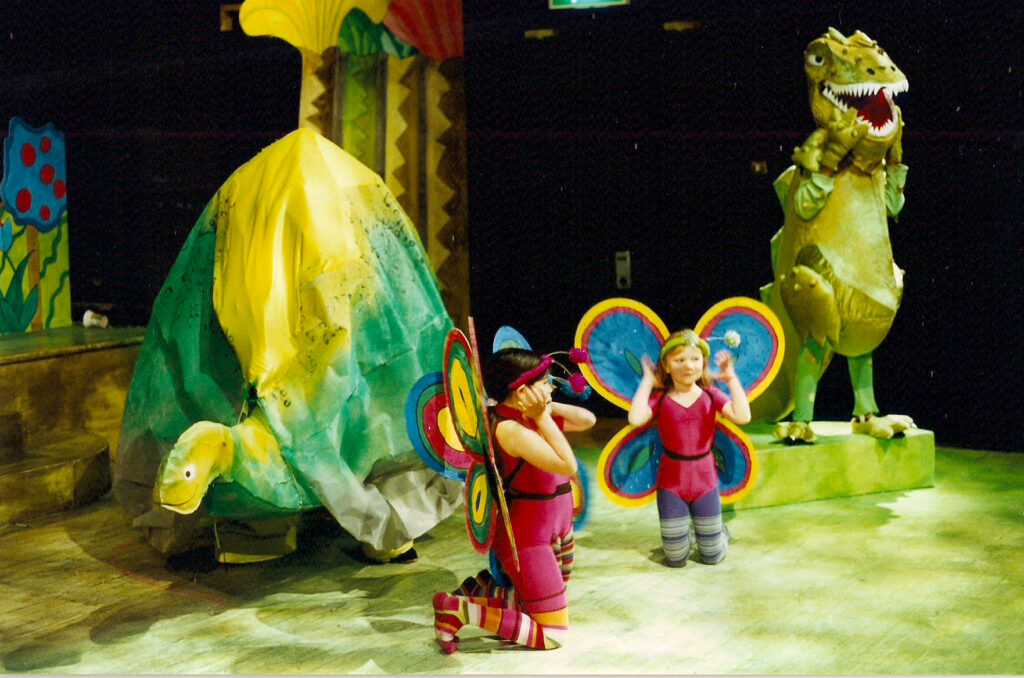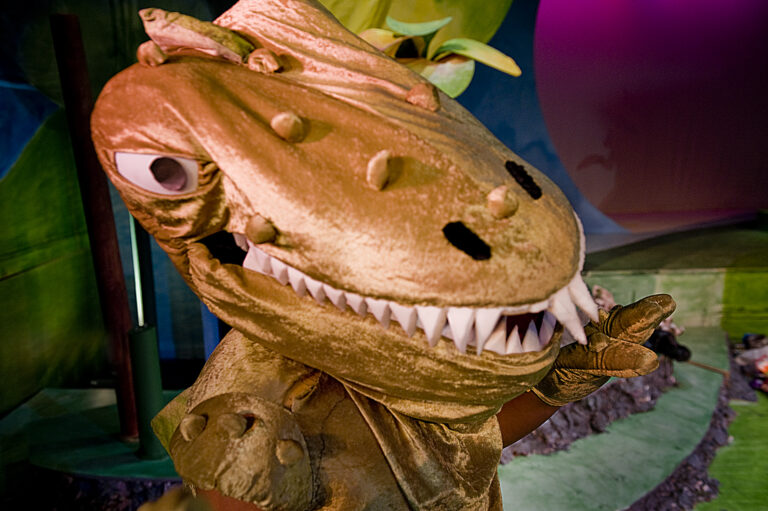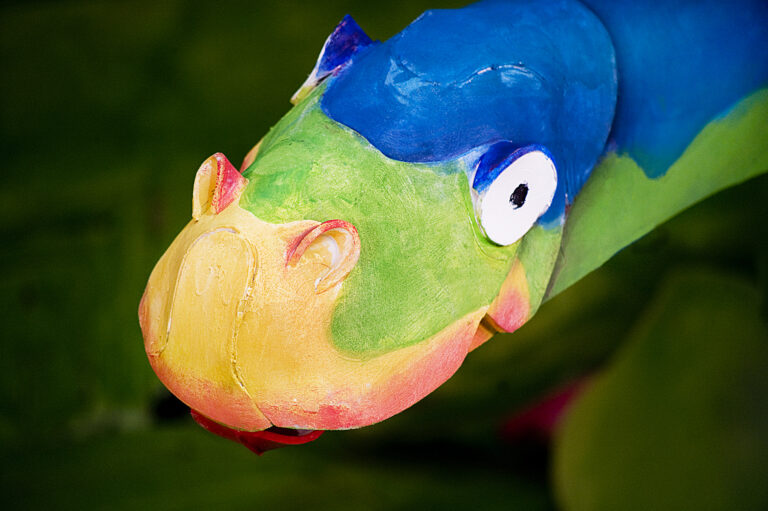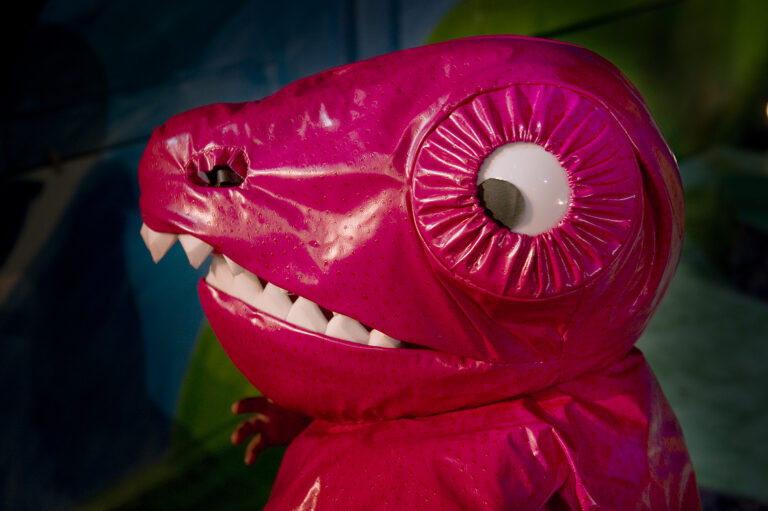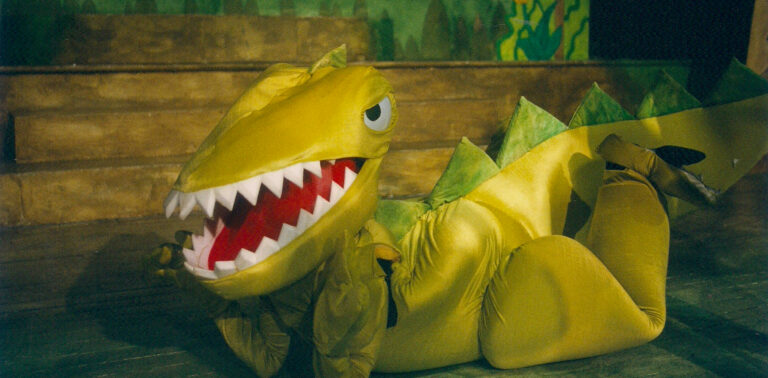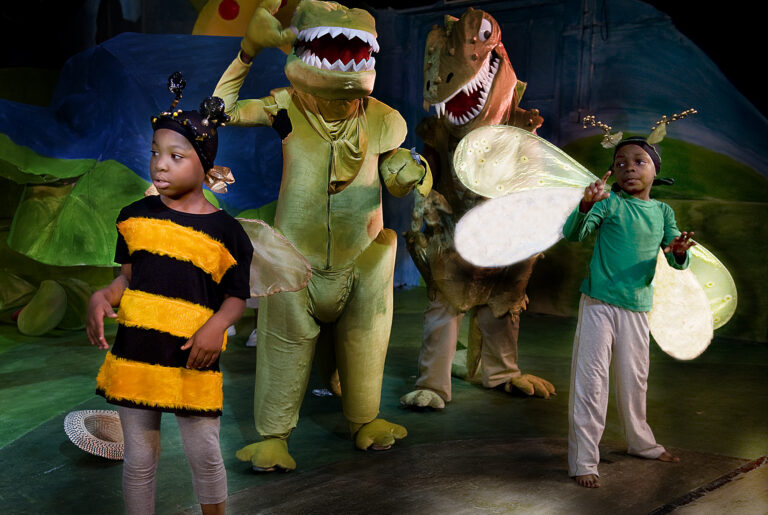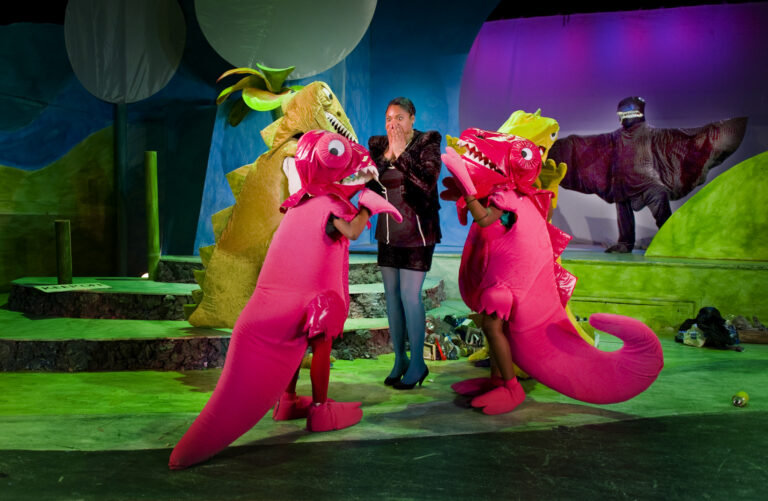Dinosaurs and all that Rubbish
Dinosaurs and all that Rubbish - the Book
Dinosaurs and all that Rubbish was a trail blazing children’s book from 1972 by author/artist Michael Foreman. It tells the story of a Little Fat Man, who is determined to build a rocket to reach the stars. As he ransacks the earth for coal and metals to build his rocket, he leaves devastation behind him. Reaching a star he finds that there is nothing there: none of the beauty of earth’s flowers and fruits, animals and trees. So he sets a course for home.
While he is away, the heat of the factories he built has disturbed the dinosaurs, who emerge from their hiding places under the rubbish mountains. “Pooh!” one of them remarks – “This place stinks!” The dinosaurs dance down the massive piles of rubbish, chase away the greedy people, and do not rest until all living things are restored to the earth. Beautiful plants and fascinating creatures repopulate the land.
When the Fat Man returns, at last he understands that Earth itself is really his home, and a paradise that belongs to everyone.
The book is prophetic, beautifully simple, gloriously colourful, and created in a way that the “message” can be understood by everyone. Today it is a classic fable, as eerily relevant as if it had been written yesterday.
About the Play

Dinosaurs and All That Rubbish - The Musical Play
Photographs 1988 Teresa Early, 2001 Phil Polglaze; 2010 Geraint Lewis.
Book and lyrics Teresa Early.
Music Roger Goslyn.
Design Ali MacLaurin.
Additional design and making – Technical Manager 2010 David Duffy.
Set build and costume making work experience personnel, design students, freelance makers, community members.
Recording Singers: Cerian Eiles, Rrenford Fagan, Malika Jno-Baptiste, Olivia Mace; Jack Murray.
The Making of the Play
“I know why they make us live in this place. It’s because they think we’re rubbish. Rubbish people”. Child resident of the North Peckham Estate, 1987.
Turning the book into a piece of theatre meant populating the world in which the story is told. I worried about this, because the book is so complete in itself and has only one human character in it! Happily for me, when Michael first saw the show, he was kind enough to accept my large crowd of gate crashing peasants without a murmur.
The play is a play with music; the songs, with accompanying action, are woven around the words and pictures of the book.
This is what happened. we looked, and wondered. What unknown country did the story happen in? Where in the world was this newly created place?
For us, the ‘place’ originally owed everything to the book, which led to memories of hard up tropical paradises left behind, and also owed something to footage of South American children scavenging in rubbish dumps. In the mid eighties the North Peckham Estate in Southwark combined elements of all of these. The thoughts of the local Caribbean population often went home to their islands, hard up? – well that hadn’t gone away, and children playing in rubbish? An ever present danger. This was where the company, now known as New Peckham Varieties, was based. A main influence, energising the piece, was our own current environment.
In the 1980’s the reputation of the North Peckham Estate, its notoriety was second to none. Its claim to fame? As “the worst housing estate in Western Europe” – by the mid eighties it pretty much lived up to this description. Mile on mile of empty flats soon found a new purpose by night – as shopping malls for the narcotics trade. No go actions by postmen and bin men created chaos. Large numbers of unemployed people were left without a life line when the giro did not arrive. Rubbish lying in uncollected heaps, and the huge heating system that linked together all the flats, made cosy homes and a wide ranging roadmap for rats and roaches. A network of walkways also offered a handy means of escape for local, and visiting villains. Michael Foreman’s devastated world incarnate.
The play was a reflection of its surrounding environment. As people struggled to exist in it, we were in dire need of dinosaurs. So we made some. With the book as guide and inspiration, we told the story, restored our inner islands, made songs, and danced.
The Show in Action - The Characters in the Play
The Little Fat Man
The actors shown here are not a selection of the best actors (though they may be). They are simply the best examples of pictures in the archive, which never cover everyone and everything. A major factor also is that every NPV or TP production had children cast in two teams – two performers learned each part. This had many advantages – more children had the experience of performing, illness and injury meant we had two chances of having a full cast, and the experience of having someone else in “my part” was educational all round….. But we could not afford to employ our professional photographers twice, so one or other team had to rely on mum or dad to take some shots
Children and Small Animals
The children in each team played a whole range of parts – the Little Fat Man by a whole mixture of small boys and once, owing to an amazing performance in rehearsal, a girl. Throughout the show the children whizzed on and off stage, changing costume and role. The Butterflies and bees were tiny, around five, and only came on at the end.
Dinosaurs!
Full scale musical for children and family audiences
Cast
Adults: 7 male, 5 female
Teenagers: 3 male, 4 female
Children: 10 children aged 7+ or older
Running time
1 hour 20 minutes
Music
Money Song
World Let Loose
The Back Story
In 1985 the company then called Peckham Varieties, afterwards, New Peckham Varieties, and later Theatre Peckham, was housed in a local Community Centre. Peckham then was a different place from the outwardly more polite society it is today. The problem was that the money from places like Community Centres was frequently hijacked – in a word – stolen. For example, the Boss of such an organisation might decide that he is entitled to help himself to large sums of money out of the resident company’s funds. .
We were then not in direct control of our finances, our grants were processed through the Centre hosting us. When the time came to submit accounts to the GLC, the Centre Director was nowhere to be found – and our money was gone! Was this the end of our nascent company?
No way! It was homeless time, but it was also air lift time. I completed a mega application form for new money in record time and delivered it.
We had to have a new place to work. After nearly six months the money came through. The small hall at St Luke’s Church on the North Peckham Estate, then notorious as “the worst housing estate in Western Europe.” was empty. Now reborn as “New Peckham Varieties ” St Luke’s Hall was home to NPV company for the next six years.
If you would like to perform Dinosaurs and all that Rubbish with your company, musical theatre society, or school, please email: productionshollyblue@gmail.com
Full script, backing tracks for complete show, vocal recordings for all songs, and original working designs are all available.
© Holly Blue Productions

